Cornus capitata
HIMALAYAN STRAWBERRY TREE, BENTHAM'S CORNUS, BENTHAM'S CORNEL, EVERGREEN DOGWOOD
syn. Benthamia capitata, Benthamia fragifera, Benthsmis fragifera, Benthamia capitata var. khasiana, Cornus capitata subsp. brevipedunculata, Cornus capitata subsp. capitata, Cornus capitata subsp. emeinsis, Cornus capitata var. khasiana, Cynoxylon capitatum, Cynoxylon glabriusculum, Dendrobenthamia capitata, Dendrobenthamia emeiensis
Family: Cornaceae
Pronounced: KOR-nus kap-ih-TAH-tuh
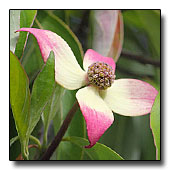
Quick Jumps
Growing Guide
Rainy Side Notes
GROWING GUIDE
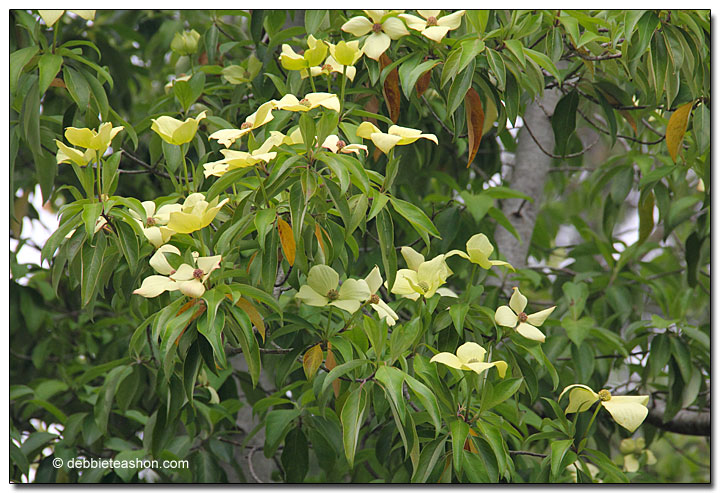
Origin:
North India and China.
Plant Group:
Broadleaf, semi-evergreen tree,
Hardiness:
Sunset zones: 8,9, 14-20* *Note my take on its PNW hardiness in the rainy side notes.
USDA zones: 7-10
Heat zones: 9-8
Mature size:
Height: 20-30 feet (6-9 m)
Width: 20-30 feet (6-9 m)
Flowering period:
Late spring to midsummer.
Flowering attributes:
Tiny flowers are produced in clusters on hemispherical heads and surrounded by 4-6 obovate, 1½ to 2-inch long, white bracts that fade to pink as the bracts mature.
Leaf attributes:
Ovate to lance-shaped, 4-inch long, gray-green leaves with lighter green undersides can remain evergreen during milder winters but shed their leaves during colder ones.
Light:
Full sun.
Soil:
Well-drained, humus rich soil.
Feeding:
Side dress with compost in spring.
Propagation Methods:
Sow seed as soon as ripe and place in cold frame. Seed can be slow to germinate.
Cuttings of half-ripe shoots in July and August.
Pests and Diseases:
Resistant to anthracnose that is problematic for many dogwoods.
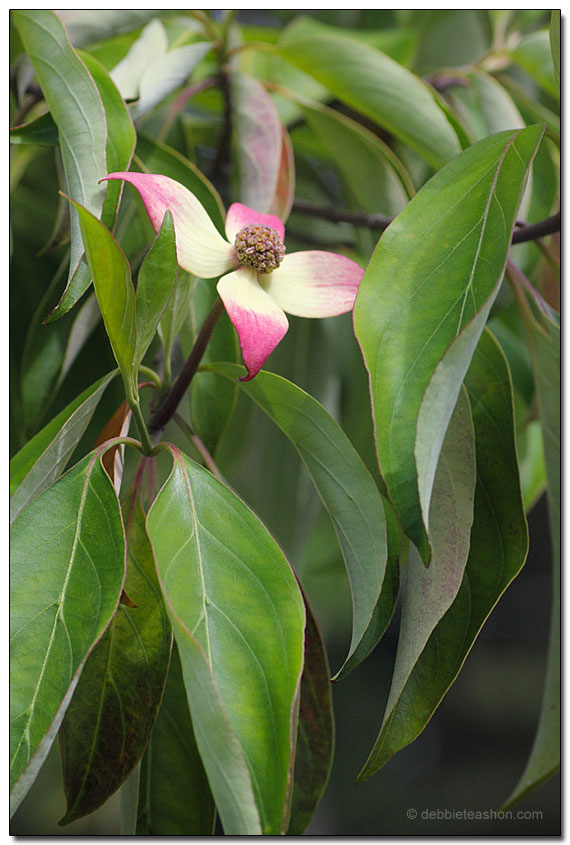
Rainy Side Notes
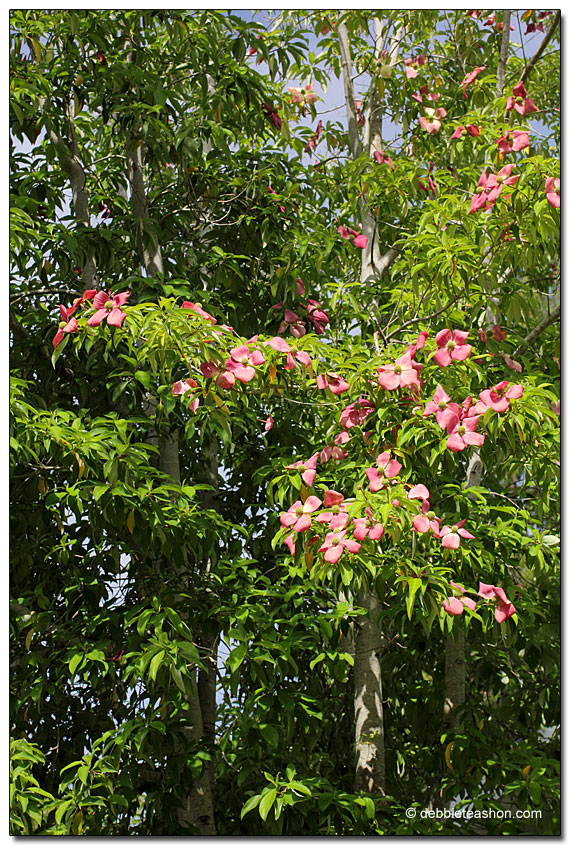
I planted a Cornus capitata that Dan Hinkley described as, “Admittedly tender, it flourishes in the cool PNW if planted against a warm, southerly exposed wall, preferably brick, and many centuries-old….” I knew I flirted with hardiness zones in my garden and wondered if the tree would survive the long haul. For the cost of eight dollars, I willingly took the risk.
Many years passed since I planted the evergreen dogwood seedling from a d2 pot and into the ground on the south end of my home. To be exact, the year was 1998 when I found the dogwood offered at Heronswood Nursery — a seedling from seeds collected from an Alpine Garden Society expedition in 1995. I still have the marked-up catalog from that year with a star next to it, marking my initial interest before I whittled the list down to what I could afford. The seedling won on my second round of purchases. My notes in the margin of the catalog said “south wall of house.” I had a plan. I followed through.
Many years later, I still didn’t know if I can definitely say how the tree performs in the Northwest. Here is why. In 2013, like no other time before, the tree filled its branches with creamy-white bracts that surrounded the smaller flowers. Sure, it blossomed with a flower here and there over the years, but mainly on the lower branches. The bracts continued to grow more prominent (and so did my eyes when I viewed them) and began turning pink around the edges as the season progressed.
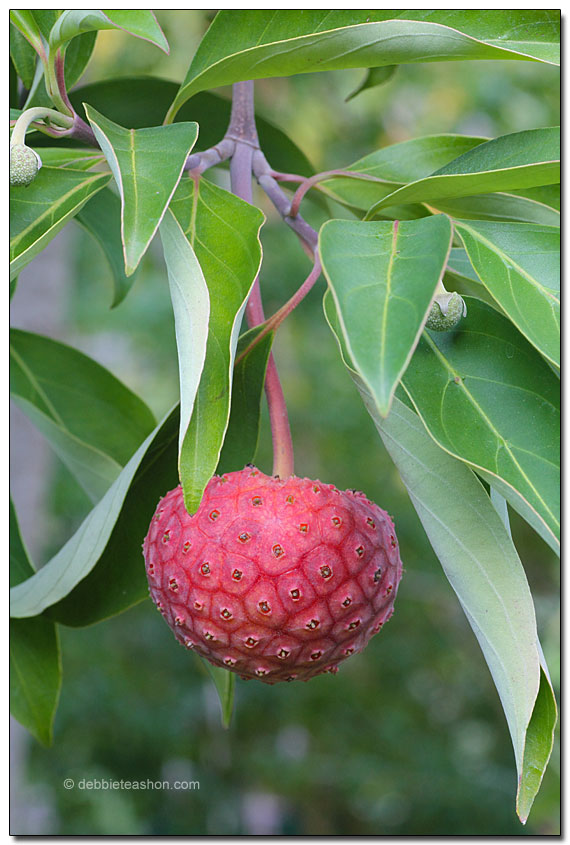
The bracts would end the show after it went pink with age, and the dogwood tree in its twenty-foot-tall splendor looked glorious! The show didn’t end there. Fruit began to develop. They started out smallish and continued to grow until they grew into the size of small to medium plums. They hung onto the tree for a long time. I picked what I could reach and ate the mealy, custard-like fruit.
For six years before it really began to flower, the tree received little supplemental watering. In the area where it grew, we had ripped out a fence, and a portion of it gave way to accommodate my father’s fifth wheel when he came to live with us in 2006. In 2011, professional gardener Philip Bloomquist began restoring the garden, and I began irrigating the area again. The tree survived the neglect along with other shrubs and perennials.
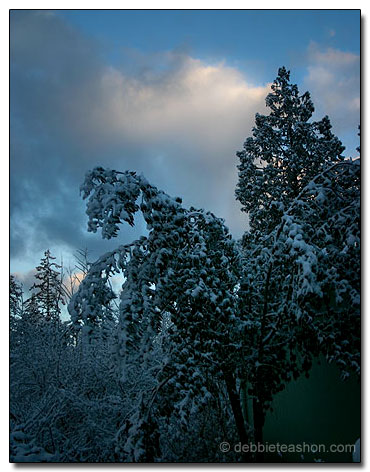
Two years of harsh winters in 2009 and 2010 did not kill the tree. Those years it lost all its leaves, and I thought it might not make it. When the spring brought new foliage onto the branches, I became confident the tree could survive in my garden.
Philip took cuttings for his nursery a few years before, and we planted one of them in another garden area. A healthy specimen growing in a gallon pot didn’t help it to survive the harshness of the 2010 winter.
In the same spot in 2012, I planted another form of the species Cornus capitata ‘Mountain Moon’ purchased from Cistus Nursery (in Oregon). According to them, it is supposed to be a hardier selection than my species. In its first year in the ground, we experienced a mild winter, which most likely helped its survival. With no south brick wall or home to help it, I watch how this new one survives harsher winters, keeping my fingers crossed that it becomes well established before the next one.
I am confident that irrigating the older dogwood helped it flower better than before. However, the weather may be part of the equation too. This is the part I enjoy the most about gardening — experimenting, discovering, and learning what works and what doesn’t. When I first planted the tree seedling, I couldn’t find any advice on how to grow it besides the tongue-in-cheek brick wall suggestion. I learned as it grew (and neglected it for some of those years), and so far, it is a proven survivor once established.
I had hoped my dogwood would continue to flower as it did in 2013, even after a harsh winter, because I could control its watering needs. If the beautiful bract display depended on the weather, then I would have to relish the showy bonus years when it flowers and enjoy its presence as a beautiful evergreen tree during the barren years.
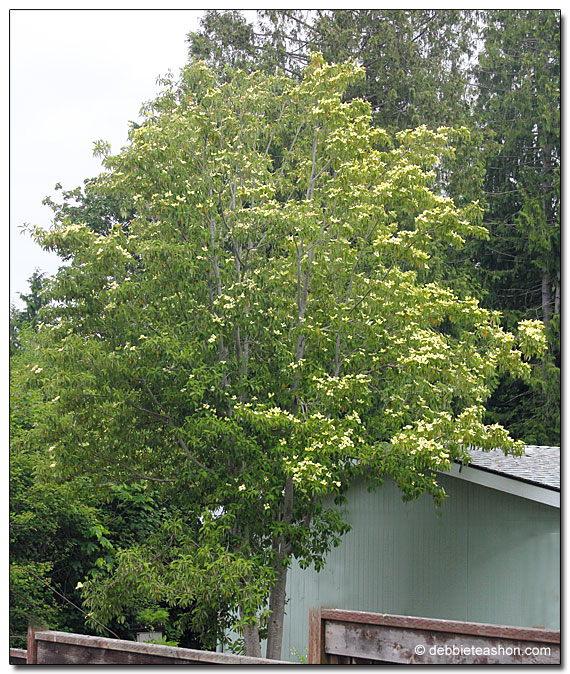
Although the tree proved to be drought-tolerant, it performed its best when given an inch of water per week during the summer drought.
In the end, a new owner bulldozed the tree to the ground to make way for a carport. I'm still intrigued by this dogwood that lived nearly 18 years and grew more beautiful with each passing one. I mourn its loss.
I live in a warmer microclimate (zone 8b), being close to Puget Sound. For colder parts of zone 8, I would try Cornus capitata supsp. emeiensis if one could be found. It is reported hardier. Because of some taxonomy confusion, the tree is sometimes listed as C. emeinsis, C. omiensis, or C. omeiensis.
by Debbie Teashon
Photographed in her garden.

Gardening for the Homebrewer: Grow and Process Plants for Making Beer, Wine, Gruit, Cider, Perry, and More
By co-authors Debbie Teashon (Rainy Side Gardeners) and Wendy Tweton.

